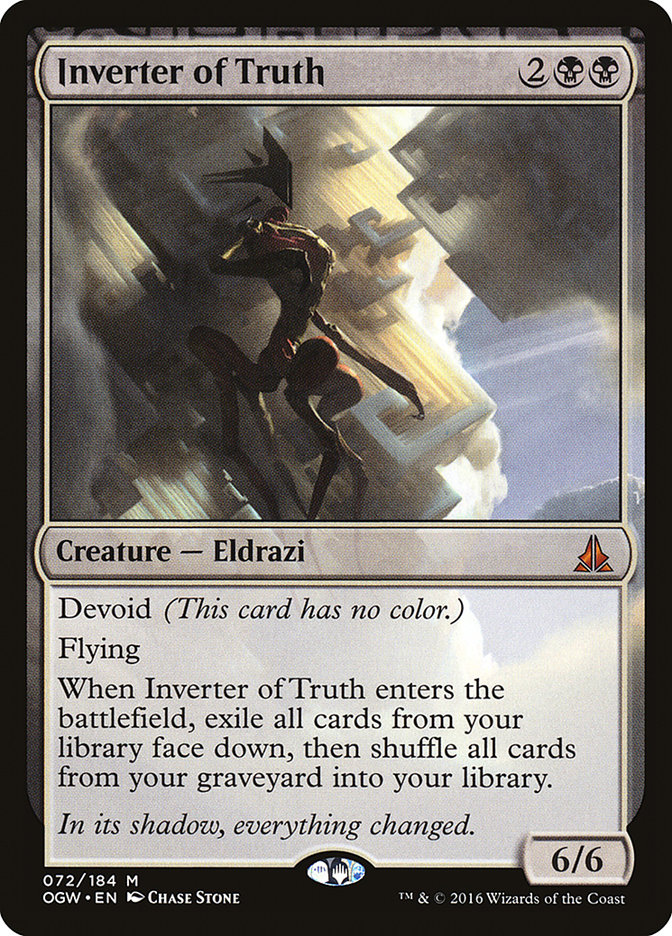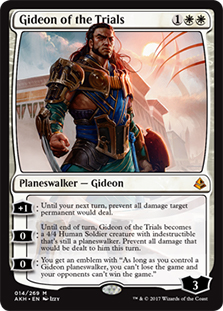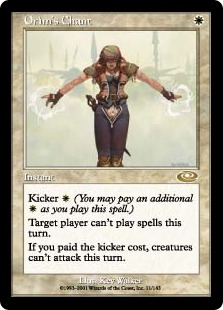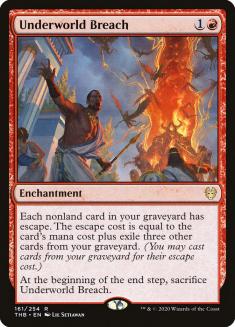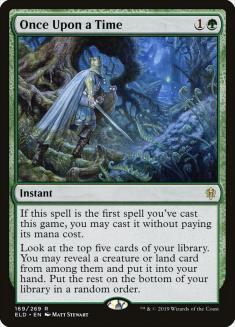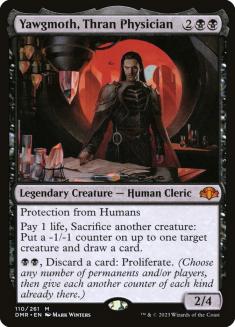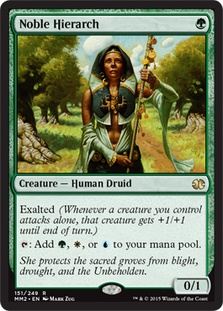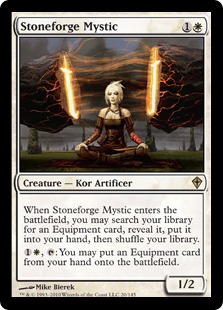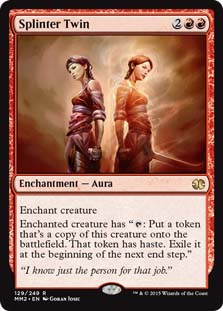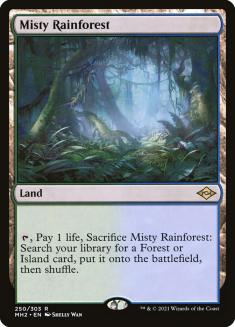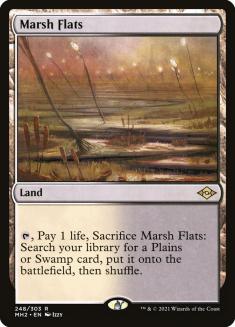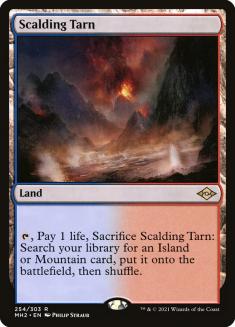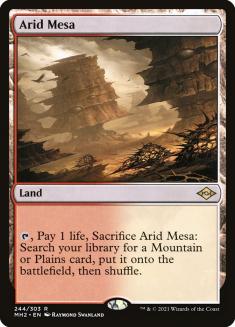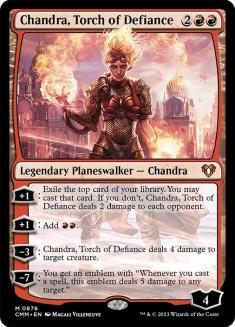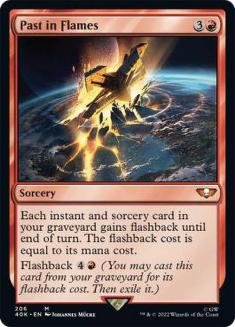Last week may have felt several years long, but Wizards of the Coast (WotC)’s latest Banned and Restricted announcement happened just last Monday. I know, I can hardly believe it either.
Even though my anxious mind is more concerned with what’s going on in the wider world right now than with the particular intricacies of the Magic: The Gathering economy, I still want to cover the latest Magic finance news as best I can. If you’re anything like me, continuing to focus on the ups and downs in our favorite game can have a calming effect in times of uncertainty. And honestly, I’m really proud of the steps that the Magic community has taken to help each other out as we all do our best to cope with everything. It’s great to know that we’re all in this together.
So yeah. There was a B&R announcement last week and it was actually pretty meaningful for us here in the Magic finance community. Let’s talk about it.
The Pioneer Non-Bans Are A Big Deal
I was pretty certain that Dimir Inverter would be the target of a ban last week, but I was wrong. WotC ran the numbers, and they came back with data that shows how Dimir Inverter isn’t quite as dominant as it seems.
Based on what I’ve been able to suss out, WotC might have a point. Dimir Inverter’s metagame percentage has definitely dropped off a bit over the past couple of weeks and there are a couple of effective ways to fight the combo. The deck is definitely not at Hogaak or Oko levels of busted, and I suspect that the deck’s similarity to Modern Splinter Twin has more than a little to do with people’s certainty that it would be banned. I also think WotC is trying to be careful about banning too many things in their eternal formats (more on that a bit later).
Financially, this decision means good things for cards like Inverter of Truth, Dig Through Time, and Gideon of the Trials. The prices of these cards were somewhat held back by fear of a Dimir Inverter banning, but that’s off the table for at least a month or two. I haven’t seen any significant gains yet, but that’s due more to the lack of upcoming tabletop tournaments than their underlying metrics. Once those events end up back on the calendar, you can expect the key Dimir Inverter staples — and the key cards that help fight the combo — to increase in price.
Of course, there’s still some uncertainty over whether or not WotC made the right call in leaving this combo intact. If WotC just ends up having to ban Dimir Inverter in a few months anyway, then all of these cards will end up crashing in price regardless. I definitely think there’s more risk inherent in these cards than the B&R announcement makes it seem, but you should still take this as a major vote of confidence. Unless you see Dimir Inverter numbers improve over the coming months, don’t expect a banning — and do expect its staples (and Gideon) to hold their value.
Sell Your Copies of Silence and Orim’s Chant
Legacy spikes are few and far between these days, but Underworld Breach was no normal Legacy staple. Jeskai Breach was the best-performing deck in the format by a wide margin, and two of the biggest gainers of the past month, Silence and Orim’s Chant, saw play both in and against those Underworld Breach decks.
Underworld Breach has now been banned, but Orim’s Chant and Silence have only seen small dips over the past week. That will change, and soon. Both of these cards saw 400-500% gains due to the existence of that combo, and there’s no reason for them not to fall right back to where they were before Theros Beyond Death was printed.
You should sell your copies now, even at below-market rates.
What Happens to Once Upon a Time?
Once Upon a Time is nearly out of options. Banned in Standard, banned in Pioneer, and now banned in Modern, will Once Upon a Time see enough play in Legacy, Vintage, or Commander to maintain its current $5 price tag?
I tend to be more bullish than most Magic finance folks when it comes to the power of Commander demand relative to competitive demand, but Once Upon a Time just isn’t very good in that format. According to EDHREC, the green instant only shows up in about 2% of Commander decks, below at least 50 other cards from Throne of Eldrane. Those numbers will rise a bit now that it’s cheaper to purchase, but don’t expect casual demand to prop up the card’s value going forward.
Once Upon a Time sees a little bit of Legacy and Vintage play, but not enough to maintain even 5-10% of the card’s pre-ban level of demand. Modern is at least ten times as popular as both of those formats put together, and it saw much more play in Modern than it does in Legacy or Vintage. Once Upon a Time might not end up in the bulk rare range for a while, but that’ll mostly be due to inertia and price memory. If you’re holding these in your collection and you don’t play either Legacy or Vintage, I’d sell them.
I do expect that foil copies of Once Upon a Time, especially alternate-art Collector Booster foils, will maintain most of their current price tags. Most of the folks who already have a playset of these will hold onto them, and foil prices tend to be a little bit stickier regardless. I expect it’ll lose at least 20-30% of its pre-ban price tag, but that still puts it well ahead of the non-foil, which could be a $1 card by the end of the year.
Changes to the Modern Metagame
The Once Upon a Time ban should make the Modern metagame healthier without killing too many existing decks. Eldrazi Tron and Amulet Titan will get a little worse, but both decks are still firmly ensconced in the format’s top tier. To that end, I wouldn’t expect to see any of those prices drop. In fact, this somewhat insulates Amulet Titan from seeing a deck-ending ban at any point in the near future, which means that you can buy in with a decent amount of confidence right now.
The decks that are most hurt by the banning are the Tier 2 and 3 strategies that leaned pretty hard on Once Upon a Time for mana consistency. Infect and Golgari Yawgmoth come to mind, as do a couple of the Jund and Delver variants kicking around the fringes of the metagame. This is pretty frustrating for the folks who play these decks, which emphatically were not the intended target of the banning, but it’s the price we have to pay for getting rid of a card that absolutely needed to go.
Third-tier decks like Infect rarely cause lasting price spikes, and the Once Upon a Time ban shouldn’t cause any major price drops, either. Yawgmoth, Thran Physician might drop a little, but Commander demand will mitigate most of those losses. Noble Hierarch didn’t really see any spike when Infect became marginally viable again, though, and I don’t think it’ll drop any further now that the deck isn’t positioned as well. In fact, I can’t think of a Modern staple I’d definitely move on from right now as a result of this banning other than Once Upon a Time itself.
Splinter Twin Is the New Stoneforge Mystic
Before Stoneforge Mystic was unbanned, the card would spike about a week before every major B&R announcement. Afterward, it would spend a few months slowly creeping back down until it eventually settled in a few dollars higher than its old price point. If you were hip to this trend, you could buy Stoneforge Mystics every time they hit their biannual lows and flip them in the hype leading up to each B&R decision.
Splinter Twin has been threatening to follow this trend for years, but the card still remained steadfastly below $10, even at the height of its biannual pre-B&R hype. No longer. The internet was bought out of Splinter Twins a few days before this last announcement, and the price shot up to $25 in a matter of hours.
Some social media folks were wondering if this might be insider trading, but nope — it was just a good old-fashioned speculative buyout that didn’t pay off. To wit, Splinter Twin’s price tag has already dropped about 50% in the week since the announcement.
Splinter Twin is somewhat less likely to be unbanned than Stoneforge Mystic was, but I definitely don’t think it’s impossible. Considering the combo pieces that WotC is currently letting exist in Pioneer, a day should come when Twin is finally set free, especially if WotC believes they’ve printed enough safety valves in the format to bring it back.
That said, Splinter Twin’s chances of being unbanned are largely irrelevant. All that you need to ride this particular train is a community that believes in Splinter Twin’s chances, and we’ve got that in spades. Like Stoneforge Mystic before it, I wouldn’t be shocked if Splinter Twin spikes every six to eight months from now on. Buying at the seasonal lows and selling in the days leading up to the unban announcement should be free money for the next couple of years.
Ban Fatigue Has a Major Impact on the Market
Both Ross Merriam and Todd Anderson wrote about “Ban Fatigue” last week, and I wanted to touch on it as well. Even though Ross and Todd disagreed on whether or not it was a good decision to leave Pioneer alone, they were on the same page about the consumer confidence crisis that bannings have on the Magic market. It could come as no surprise that I agree with them as well.
Put simply, the only reason people are willing to spend $500+ on an eternal deck is the knowledge that they’ll be able to play that deck for a long time to come. If decks are banned out of the format every few months, many casually competitive players are just going to flock to Standard, since it’s a whole lot cheaper, and at least set rotation is a thing you can plan around. Honestly, all it takes is one “my entire deck was banned today” experience to put folks off eternal play for years. I still have friends who haven’t picked up Modern since their Birthing Pod deck was banned back in 2015.
It’s no secret that Modern prices have been on the downswing recently, and this is a big part of the reason why. Between the constant Secret Lair reprints, the advent of Pioneer, the major metagame shifts that Modern Horizons created, and the rash of recent bannings, buying into Modern feels like a riskier and more frustrating proposition now than it has at any other point in the format’s existence.
Will this lack of consumer confidence continue? I honestly don’t know. Even though WotC banned Once Upon a Time in Modern last week, the lack of bans in Pioneer makes it seem like they might be committing to a slightly lighter touch in 2020 than they used in 2019. We also know there’s no Modern Horizons set this year, and I’m hopeful that the design lessons of Throne of Eldrane will give WotC pause when it comes to printing the next Once Upon a Time.
I’d like a more direct statement from WotC about Modern stability, which is something they should be fully committed to right now, but it does at least seem like something they’re aware of at the moment. If the next few months bring a more steady metagame without massive shifts or absurdly broken cards, we should expect to see prices start to increase again at some point later this year.
This Week’s Trends
Unfortunately, we need to talk more directly about the COVID-19 pandemic. As of this writing, most major Magic events have been cancelled through the end of April, and WotC is planning on allowing local game stores to sell Ikoria Prerelease Packs for home play. With many people getting sick while the rest of us gear up for weeks of social distancing and supply chain disruptions, Magic: The Gathering is unlikely to be at the forefront of our minds as the spring of 2020 continues to unfold.
It is impossible to know what will happen in the world of Magic finance while the greater world struggles with COVID-19. Unlike the stock market, the Magic card market hasn’t seen any significant drops yet. This is in large part because Magic cards aren’t a hugely liquid asset — you can panic-sell stocks pretty quickly, but selling cards requires sorting them and either listing them online or taking them to a vendor in person. That gives them a bit of a buffer from panic that most investments do not have.
Long-term, I can’t predict the future of Magic prices with any sort of certainty. I have no idea if things will be roughly back to normal by May, or if we’ll still be doing some forms of social distancing in October and November. Plus, even if I did know how the virus was going to play out, I’d have a hard time predicting its effect on the market. It’s possible that competitive card prices will drop precipitously due to the lack of events, and it may take years for them to recover. It’s also possible that the lack of events won’t affect prices much at all, because it’ll be so much harder for dealers to buy up stock and so much Magic is played at the kitchen table anyway. Demand is certainly going to drop, but liquid supply is likely to tumble as well. Tournament staples are likely to see some sort of market correction, but I don’t know if it’ll be closer to the 10% range or closer to the 50% range.
At the very least, I expect Commander cards to continue doing well during the interim. People are going to play a lot of casual Magic during the social distancing phase, and small groups will pop back up again just as soon as it’s safe for them to do so. Paper tournaments will also be back, of course, as evidenced by how crushed so much of us are about having to lose them this spring. Long-term, I firmly believe that tabletop Magic will continue to survive — and thrive.
The next few weeks are going to be rough for all of us, though, no matter what. I honestly don’t know whether you should sell your cards now or not, but I’m holding on to all of mine. I can’t wait to pull them out again and see you all at an SCG Open or MagicFest as soon as it’s safe to do so.
Moving on to what would be the headline news in any other week, WotC is finally reprinting the enemy-colored fetchlands! While they’re calling this part of their Drop Series and likening it to the other Secret Lairs we’ve seen so far this year, distribution is going to be a lot more akin to the old From the Vault sets, where WPN-qualified local game stores got a limited number of them to sell in their storefronts.
For anyone considering panic-selling their fetchlands in response to this announcement, consider that the print run is going to be incredibly small. Normal Secret Lairs are print-to-order, with every potential customer able to buy up to five or ten copies of each depending on the drop. These fetchlands aren’t going to be sold like that, though — they’re going to be limited to a maximum of ten per store, which is a drop in the fetchland bucket. The suggested price point for this set is also way up in the $165 range — a deal when compared to the current secondary market price of these cards, perhaps, but not nearly low enough to flood the market with low-priced fetchlands. I also wouldn’t be surprised if many stores charged more than $165 for their boxes, since demand is likely to be quite high and local stores are likely to really need the cash.
Don’t think you’ll be in the running to pick up a set of these fetchlands at your LGS? Well, WotC has also said that they’ll be doing a Secret Lair “superdrop” at some point this summer. You won’t be able to buy the set on demand, but each purchase (which will likely be about $200) will come with a single alternate-art fetchland at random. This is also unlikely to increase the supply or drop the price in any meaningful sense, but it might hurt the price of whatever Secret Lairs are included in the superdrop as people try to win the fetchland lottery.
I figured that a fetchland reprint would be a cause for celebration, since it’s something we’ve been asking about for years, but most people seem frustrated that WotC is handling it this way. I get it — anyone who doesn’t already have a full set of these cards was probably hoping they’d show up in a Commander pre-con or a Standard-legal set so they could pick up their missing copies for $20 each. That’s still a longer-term possibility, especially since so many people are clamoring for it, but it’s definitely a sign that WotC wants to keep the price of these lands high for now — perhaps so they can do things like sell a total of five cards for $165.
At the very least, we do have to give WotC props for answering one of the biggest problems we had with Secret Lairs back in November: the fact that they were bypassing local game stores and selling them directly online. Local game stores need products like this to keep the lights on, especially in a year of social distancing. So if you are lucky enough to pick up one of these sets at or near MSRP — a no-brainer, if you can snag it — please remember to help support your favorite places to play Magic in other ways, too.
Speaking of WotC product announcements, it looks like we’re also getting Signature Spellbook: Chandra this year. The set is coming out on June 26th, and it’ll include Chandra, Torch of Defiance and Past in Flames as well as six other cards that we don’t know yet.
Right now, Chandra, Torch of Defiance sells for $18, while Past in Flames is worth $7. Star City Games doesn’t have any of the older Signature Spellbooks on sale right now, but Gideon goes for $15-$20 on the secondary market, while Jace is worth $25-$30. Assuming you’ll be able to pick up Signature Spellbook: Chandra for $20 or less without much issue, you can expect to see both Chandra, Torch of Defiance and Past in Flames lose about 50% of their current price tag once the product hits shelves.



